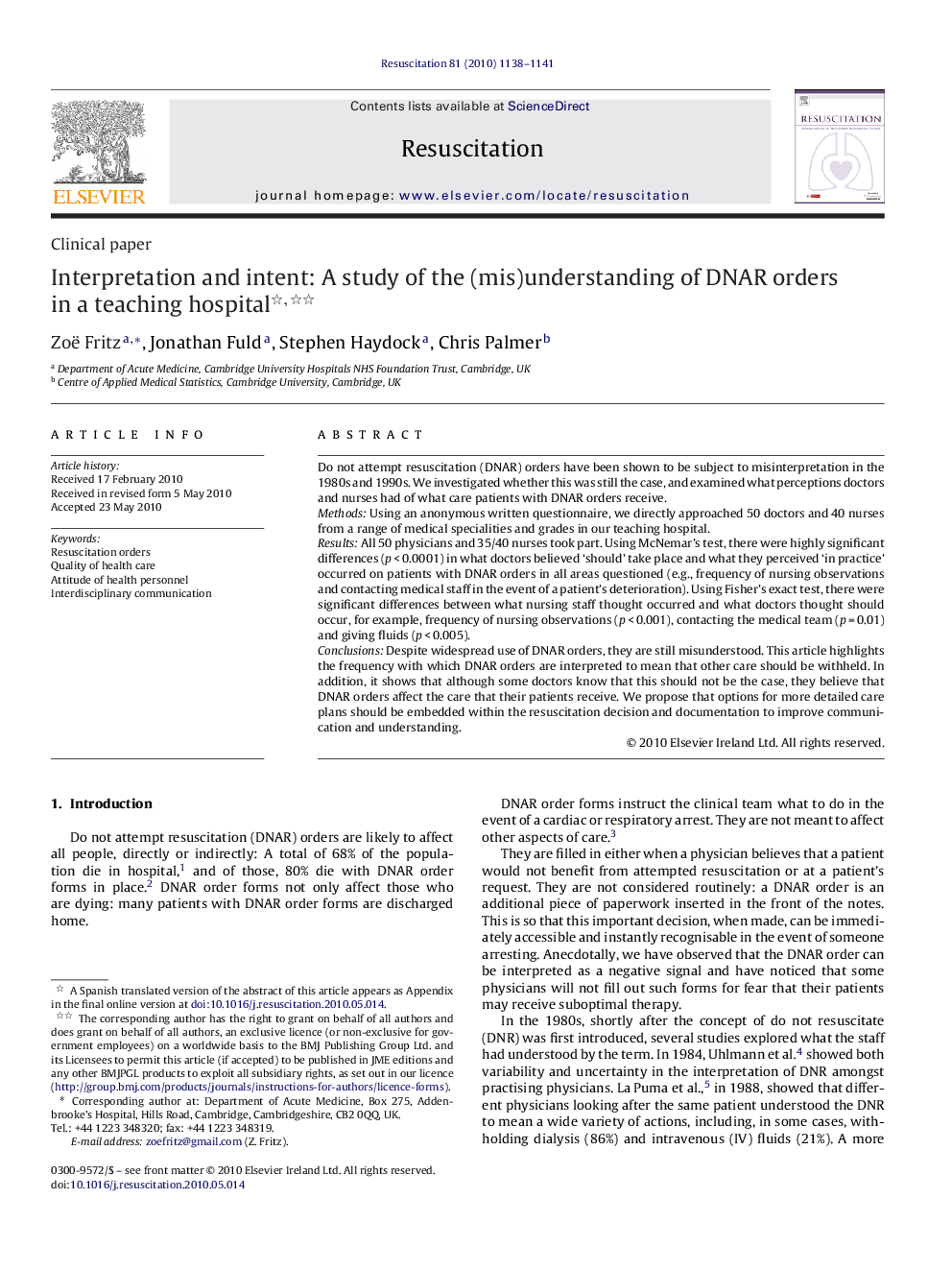| کد مقاله | کد نشریه | سال انتشار | مقاله انگلیسی | نسخه تمام متن |
|---|---|---|---|---|
| 3009307 | 1181483 | 2010 | 4 صفحه PDF | دانلود رایگان |

Do not attempt resuscitation (DNAR) orders have been shown to be subject to misinterpretation in the 1980s and 1990s. We investigated whether this was still the case, and examined what perceptions doctors and nurses had of what care patients with DNAR orders receive.MethodsUsing an anonymous written questionnaire, we directly approached 50 doctors and 40 nurses from a range of medical specialities and grades in our teaching hospital.ResultsAll 50 physicians and 35/40 nurses took part. Using McNemar's test, there were highly significant differences (p < 0.0001) in what doctors believed ‘should’ take place and what they perceived ‘in practice’ occurred on patients with DNAR orders in all areas questioned (e.g., frequency of nursing observations and contacting medical staff in the event of a patient's deterioration). Using Fisher's exact test, there were significant differences between what nursing staff thought occurred and what doctors thought should occur, for example, frequency of nursing observations (p < 0.001), contacting the medical team (p = 0.01) and giving fluids (p < 0.005).ConclusionsDespite widespread use of DNAR orders, they are still misunderstood. This article highlights the frequency with which DNAR orders are interpreted to mean that other care should be withheld. In addition, it shows that although some doctors know that this should not be the case, they believe that DNAR orders affect the care that their patients receive. We propose that options for more detailed care plans should be embedded within the resuscitation decision and documentation to improve communication and understanding.
Journal: Resuscitation - Volume 81, Issue 9, September 2010, Pages 1138–1141